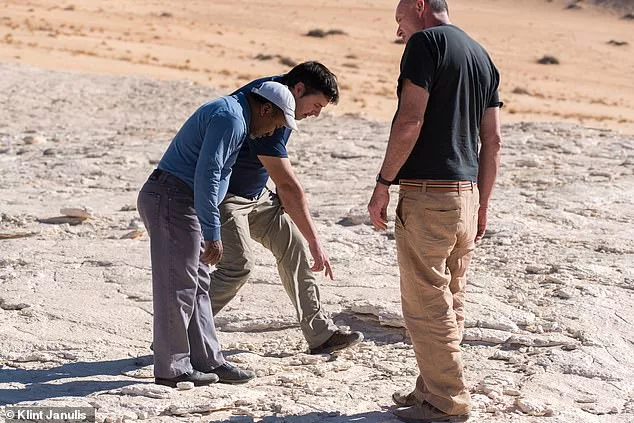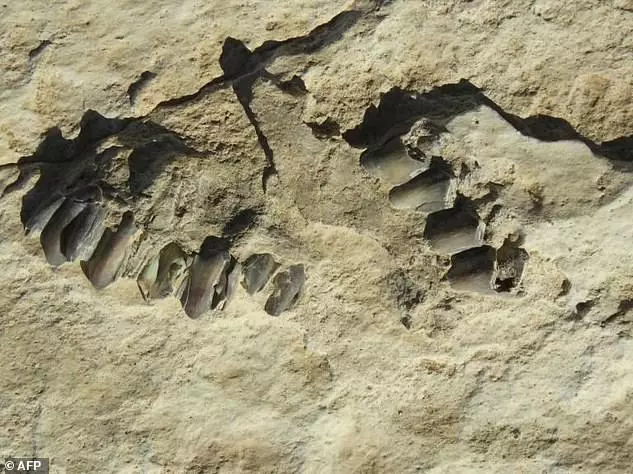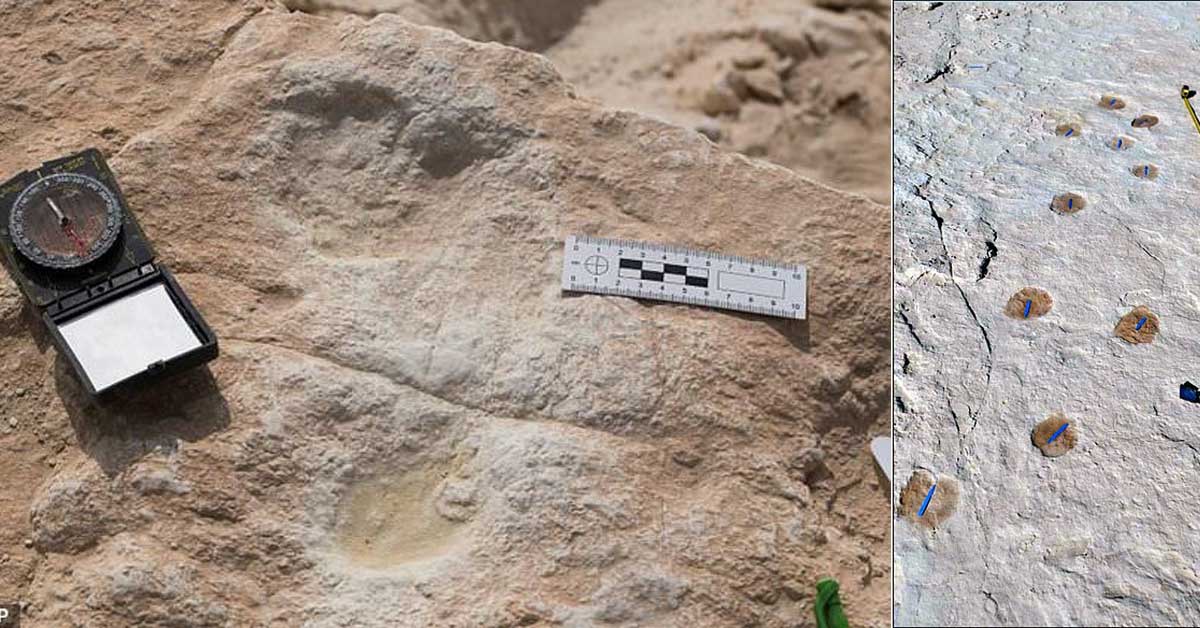Ancient Human Footprints Unearthed: Tracing the Journey of Early Migration in Saudi Arabia
Archaeologists have uncovered the earliest human footprints ever found in the Arabian peninsula.
They are believed to be around 120,000 years old and lie at the site of an ancient lake in the modern-day Nefud Desert.
This region was crucial in the migration of humans out of Africa and into the rest of the world, serving as the gateway between Africa and Eurasia.




It is thought humans appeared in Africa around 300,000 years ago and did not reach the Levant for more than 150,000 years.
Experts previously believed humans made this journey along coastal routes, but the researchers behind the latest finding believe this may not necessarily be true.
They theorise that instead of following the ocean, humans may have taken inland routes and followed lakes and rivers.
Alongside the human marks are 233 fossils and 369 animal tracks, including 44 elephant and 107 camel footprints, indicating the lake was a popular watering hole.
‘The presence of large animals such as elephants and hippos, together with open grasslands and large water resources, may have made northern Arabia a particularly attractive place to humans moving between Africa and Eurasia,’ says the study’s senior author Michael Petraglia of the Max Planck Institute.
Today, the Arabian Peninsula is characterised by vast, arid deserts that would have been inhospitable to early people and the animals they hunted down.
But research over the last decade has shown this wasn’t always the case and it would have been lush and humid in a period known as the last interglacial.
Professor Ian Candy from Royal Holloway, co-author of the study, says this period of time is ‘an important moment in human prehistory’.
‘Environmental changes during the last interglacial would have allowed humans and animals to disperse across otherwise desert regions, which normally act as major barriers during the less humid periods, such as today,’ he adds.
‘These findings suggest human movements beyond Africa during the last interglacial extended into Northern Arabia, highlighting the importance of this region for the study of human prehistory.’
The footprints were discovered in 2017 when erosion removed sediment which sat on top of the immortalised footprints, exposing them to view.
‘Footprints are a unique form of fossil evidence in that they provide snapshots in time, typically representing a few hours or days, a resolution we tend not to get from other records,’ the paper’s first author Mathew Stewart, of the Max Planck Institute for Chemical Ecology, Germany, told AFP.
The prints were dated using a technique called optical stimulated luminescence – blasting light at sand grains and measuring the amount of energy they emit.
Sand grains that are uncovered after a long time protected from sunlight act as a ‘natural clock’, the researchers say.




As soon as they are exposed again, measurements of the quartz reveals how long has elapsed since they were last visible.
Of the hundreds of prints discovered at the site, a total of seven were found to be from hominins.
Four of them, the researchers say with confidence, came from a small group of two or three people travelling together.
The researchers claim the footprints are from Homo sapiens and not another similar species, such as Neanderthals.
They came to this conclusion by estimating height, gait and mass of the individuals that created the imprints.
Neanderthals are also not known to have been in the region at this time.
The wide range of prints indicates this was a popular area and humans did not live by the lake as there are no stone tools.
As a result, the researchers believe the lake was used by humans to collect water, and probably to hunt animals who also flocked to its banks.
The research is due to be published in Science Advances.
Timeline of Human Evolution
The timeline of human evolution can be traced back millions of years. Experts estimate that the family tree goes as such:
55 million years ago – First primitive primates evolve
15 million years ago – Hominidae (great apes) evolve from the ancestors of the gibbon
7 million years ago – First gorillas evolve. Later, chimp and human lineages diverge
5.5 million years ago – Ardipithecus, early ‘proto-human’ shares traits with chimps and gorillas
4 million years ago – Ape like early humans, the Australopithecines appeared. They had brains no larger than a chimpanzee’s but other more human like features
3.9-2.9 million years ago – Australoipithecus afarensis lived in Africa.
2.7 million years ago – Paranthropus, lived in woods and had massive jaws for chewing
2.6 million years ago – Hand axes become the first major technological innovation
2.3 million years ago – Homo habilis first thought to have appeared in Africa
1.85 million years ago – First ‘modern’ hand emerges
1.8 million years ago – Homo ergaster begins to appear in fossil record
800,000 years ago – Early humans control fire and create hearths. Brain size increases rapidly
400,000 years ago – Neanderthals first begin to appear and spread across Europe and Asia
300,000 to 200,000 years ago – Homo sapiens – modern humans – appear in Africa
54,000 to 40,000 years ago – Modern humans reach Europe




